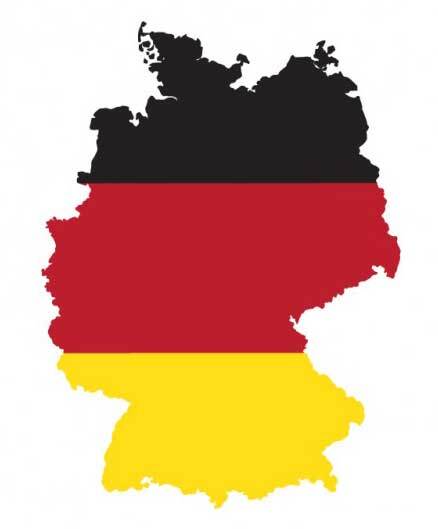OUR COMPANY
AI-Powered Platform for Automated Biochemical Data Analysis
The correlations were performed on real solutions in a biochemical laboratory.
Development of a unique platform for automated search for interaction sites
Instant Data Visualization and Predictive Analytics for Biochemical Research
We present the developed algorithm for a step-by-step transparent and understandable
search for interaction areas, each of which will be characterized by numerical physical
quantities.
Cost AI calculations for linear sequences:

Use the linear docking method, which allows you to determine the most stable binding regions according to the amino acid sequence. We propose to carry out the check with entire domains, i.e. to divide the molecule into structural elements, to determine the most contact amino acid sequences by the method of linear docking.
The interaction between sites will be characterized by numerical indicators, which will allow for a visual gradation.
The interaction between sites will be characterized by numerical indicators, which will allow for a visual gradation.
AI-Powered Linear Docking of Nap1 and Mdm2: Visual Workflow Explained
Are you working on protein–protein interactions or validating binding sites in the lab?https://binomlabs.com/linea
FREE PILOT project: https://binomlabs.com/pilot
Free AI-platform: https://binomlabs.com/server_calc
🔬 What you’ll learn: How to predict binding sites between proteins(e.g., Mdm2, Nap1)
How to use domain-level decomposition (alpha-helix, loops) to simplify docking Interpretation of lg(cond(W)) plots to rank binding probabilities
How to correlate predicted sites with experimental affinity shift. Visualization of docking-ready 3D domains in Nap1 structures Exportable results for Schrödinger, blind/hard docking tools, or mutagenesis planning
FREE PILOT project: https://binomlabs.com/pilot
Free AI-platform: https://binomlabs.com/server_calc
🔬 What you’ll learn: How to predict binding sites between proteins(e.g., Mdm2, Nap1)
How to use domain-level decomposition (alpha-helix, loops) to simplify docking Interpretation of lg(cond(W)) plots to rank binding probabilities
How to correlate predicted sites with experimental affinity shift. Visualization of docking-ready 3D domains in Nap1 structures Exportable results for Schrödinger, blind/hard docking tools, or mutagenesis planning
She has been nominated for an Academy Award, two Grammy Awards, and the Mercury Prize

Use the linear docking method developed by us, which allows us to determine the most stable binding regions according to the amino acid sequence
We propose to carry out the check with entire domains, i.e. to divide the molecule into structural elements, to determine the most contact amino acid sequences by the method of linear docking.
The interaction between sites will be characterized by numerical indicators, which will allow for a visual gradation.
We propose to carry out the check with entire domains, i.e. to divide the molecule into structural elements, to determine the most contact amino acid sequences by the method of linear docking.
The interaction between sites will be characterized by numerical indicators, which will allow for a visual gradation.
Parsing the structure into domains:
1) alpha spirals, beta sheets, turns
2) intramolecular bonds that provide the formation of domains
3) Conducting calculations on domain interactions
Checking the correctness of the 3D model based on the available data
1) obtaining the physical characteristics of interacting molecules:
1) alpha spirals, beta sheets, turns
2) intramolecular bonds that provide the formation of domains
3) Conducting calculations on domain interactions
Checking the correctness of the 3D model based on the available data
1) obtaining the physical characteristics of interacting molecules:
- stability,
- entropy change,
- Gibbs energy,
- Constant dissociation,
- Enthalpy change,
- The thermal dissociation,
- Potential energy of electrostatic interaction between all amino acid residues taken in pairs

a) MYC domain structure
Top: MYC protein is shown with conserved MYC boxes (MB) highlighted in red colours. Numbers
below indicate amino acids of human c-MYC. MB0, which is located N-terminally of MBI, is not
annotated.
Below: three protein structures have been resolved in
complex with MYC, namely AURKA, WDR5, and MAX.
[ MYC shapes the composition of RNA
polymerase II through direct recruitment of transcription elongation factors]
b) Organization of the main protein domains and conservation across different MYC super-family
members.
[Therapeutic targeting of “undruggable” MYC]
c) Schematic of WWP1, WWp2 and ITCH domains showing an enzymatic activity summary derived
from the autoubiquitination assay.
[A multi-lock inhibitory mechanism for fine-tuning enzyme activities of the HECT family E3 ligases]
Top: MYC protein is shown with conserved MYC boxes (MB) highlighted in red colours. Numbers
below indicate amino acids of human c-MYC. MB0, which is located N-terminally of MBI, is not
annotated.
Below: three protein structures have been resolved in
complex with MYC, namely AURKA, WDR5, and MAX.
[ MYC shapes the composition of RNA
polymerase II through direct recruitment of transcription elongation factors]
b) Organization of the main protein domains and conservation across different MYC super-family
members.
[Therapeutic targeting of “undruggable” MYC]
c) Schematic of WWP1, WWp2 and ITCH domains showing an enzymatic activity summary derived
from the autoubiquitination assay.
[A multi-lock inhibitory mechanism for fine-tuning enzyme activities of the HECT family E3 ligases]

Features of the interaction of Aurora-A kinase domains and N-MYC peptide, with an indication of the numerical value.
Let's move on to the analysis of spatial interactions between the found domains.


Identification of the most significant interactions (with the least number of conditions) between domains

The colors represent the interaction areas found for the linear model and transferred to the spatial model.
TP53=MEESQSELNIDPPLSQETFSELWNLLPENNVLSSELCPAVDELLLPESVVNWLDEDSDDAPRMPATSAPTAPGPAPSWPLSSSVPSPKTYPGTYGFRLGFLHSGTAKSVT

